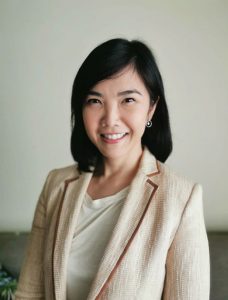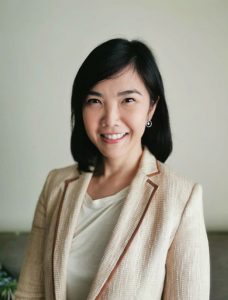The Philippine economy is beginning to be digitally transformed as the pandemic has further driven the shift of workplaces to remote modes, the preference for online stores among consumers, and the increased use of electronic wallets.
Bangko Sentral ng Pilipinas (BSP) Governor Benjamin E. Diokno, in a recent webinar, described his vision for the country becoming a digital-heavy, cash-light society to help achieve inclusive growth.
“50% or half of all transactions should be digital by 2023, and 70% of Filipino adults should have formal bank accounts by 2023,” Mr. Diokno said.
Much remains to be done to further prepare Filipinos and businesses for a digital economy to be realized. Nevertheless, several sectors are actively playing significant roles in making the economy more adaptable to a pandemic-shaped future.
Among these players, GCash (Mynt) is actively doing its share in building up the country’s digital economy not only by simply offering consumers a convenient choice for their purchases but also by empowering the public sector through meaningful partnerships.
Taking the lead in enabling these partnerships, Cathlyn Pavia, assistant vice-president and head for partnerships and public sector at GCash, shared in an interview that the company’s fintech service is grounded on its goal of enabling a digital ecosystem to help every Filipino.

“Our role is really to become a platform to make financial services available with the government, businesses, and consumers in general,” Ms. Pavia said. “While we make our own services available, more importantly, we partner with other financial services to complete that.”
More than funding electronic wallets to enable payments to partner businesses, organizations, and banks, Ms. Pavia continued, GCash is enabling various financial services within the app such as keeping and accessing savings as well as availing microinsurance.
The platform’s relevance, especially in the past few months, has been evident with an estimated 38 million registered users, which comprises a third of the Philippine population.
“GCash has been consistently the number one finance app,” Ms. Pavia added. “If you check your Google Store, you’ll see that GCash is the number one free app, above Instagram and even TikTok. That says a lot.”
Opportunities to unlock
Ms. Pavia sees, however, that in further realizing a digital economy in the country, there is still much room to promote digital payments in regional and provincial. Moreover, there are several opportunities to maximize, namely enabling a robust national identification system, which is currently in progress; increasing awareness of digital payments among consumers and businesses; and ensuring adequate infrastructure for better connectivity.
“For the public sector, there’s still an opportunity to educate them on what would be the steps to adopt digital solutions and how they can incorporate that with their programs,” Ms. Pavia explained. “For the private sector, it’s how they can utilize digital systems for the disbursement of salary of their employees. And for consumers, it’s letting them know that fintech solutions can help them [avail] financial services.”
Partnerships with government
Collaboration between private and public sectors serves as a key enabler in dealing with these challenges, Ms. Pavia stressed.
“There would really be a need for increased collaboration in addressing these concerns, and for the financial institutions’ side, that would mean co-creating programs with government institutions to educate both businesses and the public,” the Mynt official said, adding that IT and telco providers can collaborate in terms of expertise in digitalizing processes and gearing up systems for digital payment facilitation.
For GCash, collaboration plays a vital role in building the digital ecosystem. As it saw many opportunities to serve Filipinos last year, GCash has been partnering with government agencies, local government units (LGUs), and communities.
At the national level, GCash served as a partner of the Department of Social Welfare and Development in distributing funds under the Social Amelioration Program.
As many as 250,000 beneficiaries were facilitated in less than three days, Ms. Pavia shared. As a result, these beneficiaries were able to receive the funds without lining up in government offices, and they got to utilize the funds digitally, be it for groceries, utility bills, or mobile load. GCash is also helping DSWD in its Assistance for Individuals Under Crisis Situation program on a monthly basis.
At the Bureau of Internal Revenue, GCash enables contactless tax filing and payment, especially on the individual level; while at the Social Security System and the Pag-IBIG Fund, individuals can still pay their contributions conveniently amid the pandemic. Last February, SSS has enabled GCash as an option for receiving benefits.
Empowering communities
Among LGUs, the City of Makati is a key partner of GCash, and the benefits of empowering constituents through digital payments have been evident in the area. Through the LGU’s Makatizen Program, for instance, a GCash account was created for each adult constituent. More recently, the MAKA-Tulong program utilized GCash for disbursing additional financial assistance to citizens, and this was done in a matter of days instead of weeks. Also, through GCash’s PoweyPay+ platform, the LGU can disburse salaries for employees as well as regular allowances for senior citizens.

Ms. Pavia also shared that GCash will begin assisting the City of Muntinlupa in distributing allowance to scholars this year.
“The coordinators with the [city’s] schools support the idea of going digital because this can promote financial literacy among students. They get to properly monitor their expenses, and they get to explore different financial services, starting with savings and exploring investment,” she shared.
To completely build a digital ecosystem, GCash finds it important to bring services to other sectors within communities.
“When we engage in the public sector, we don’t only stop with the government itself. Now, we’re also expanding digital adoption even within communities,” Ms. Pavia pointed out.
A notable example of this is in Antipolo City, Rizal, where GCash engaged with tricycle operators and drivers associations (TODA) to enable cashless and coinless payment of fares.
“The LGU mandated that public transportation should enable digital payments as an option,” Ms. Pavia shared. “With that direction, we were already able to onboard more than 500 TODA drivers to accept QR payment, and it’s still ongoing. The target is to have up to 12,000 drivers enabled with GCash payment acceptance,” Ms. Pavia said.
All these initiatives serve as a start for GCash to help enable a digital economy in the country, and so it looks forward to further enhancing its solutions and bringing these closer to more Filipino consumers and sectors.
For individual consumers, it has just released its personal QR code functionality to make the transfer of funds more convenient between sellers and buyers. For merchants, the recently launched GLife allows merchants to access a bigger market and offer their services through a microsite within the GCash app.
And for the public sector, GCash will continue working not just directly with government entities but also through partners in enabling alternative means to disburse and collect payments.
“We really look forward to collaborating more and launch new partnerships and even greater synergies with existing stakeholders in the government,” she said.
GCash will participate in the BusinessWorld Virtual Economic Forum special edition with the theme “The Digital Economy PH: Towards a Faster Economic Recovery” on May 26 to 27, which will gather key leaders from BSP, the International Monetary Fund, and other senior business sector leaders to discuss digital technology as an enabler of economic development.

